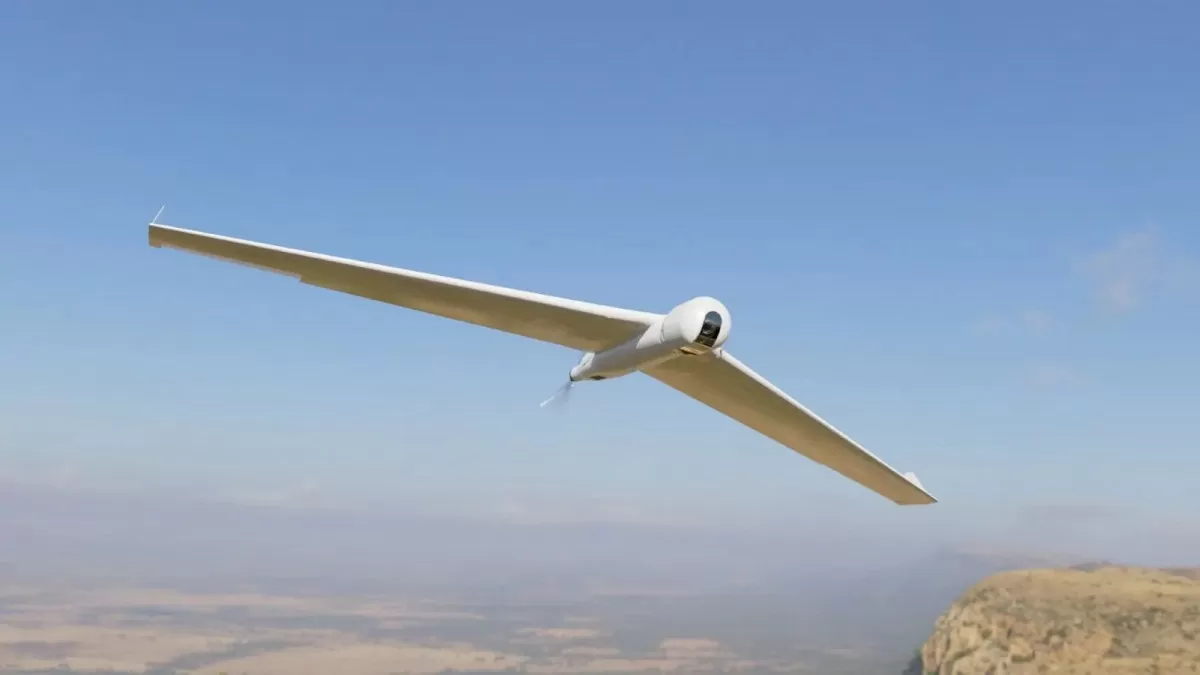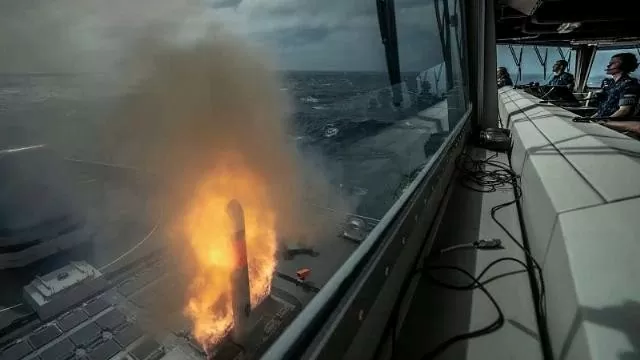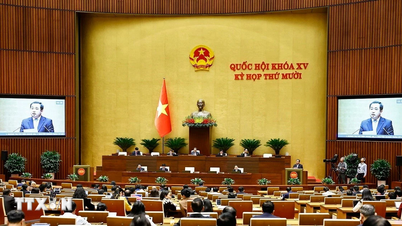Defense industry news March 15: Russian UAVs are capable of avoiding attacks. That is the assessment of Western experts with AI integrated on Russian UAVs.
Russia develops AI-integrated UAV capable of avoiding danger; European air defense weapons "lost their sacredness" in Ukraine are the contents of today's defense industry news.
Russia develops AI-integrated UAV capable of avoiding danger
ZALA-made reconnaissance unmanned aerial vehicles (UAVs) have learned to avoid attacks from FPV interceptors.
According to information posted on the ZALA Company Telegram page, the manufacturer has paid attention to the feedback of the ZALA Z-16 UAV crew. The aircraft was attacked by an enemy UAV, but still escaped. A Russian expert reported that the Z-16 lost contact and was damaged by shrapnel in the fuselage, but was still able to return to the departure point on its own.
 |
| Z-16 reconnaissance unmanned aerial vehicle (UAV). Photo: ZALA |
The Z-16 UAV is equipped with a special camera with machine vision technology that can issue commands to perform evasive maneuvers while the enemy tries to intercept it. ZALA emphasizes that all ZALA specialized UAVs are equipped with artificial intelligence to search for and identify priority targets.
Previously, in January 2025, a Russian reconnaissance UAV was attacked by an FPV attack device, but survived and returned.
In September 2024, Forbes reported that Russian Armed Forces reconnaissance drone operators began using camouflage paint to protect the equipment from FPV interceptors.
European air defense weapons "lost their sacredness" in Ukraine
The SAMP/T air defense missile system that Europe transferred to Ukraine has encountered a problem during operation.
The French newspaper Meta Defense reported: “The SAMP/T Mamba system sent to Ukraine has indeed encountered some software problems during its operation. According to sources in the European defense industry, the problem is a consequence of the assembly of the system components in Italy and France.”
 |
| SAMP/T air defense missile system. Photo: Defense News |
SAMP/T is capable of shooting down ballistic targets, and can therefore be considered a conditional analogue of the US Patriot air defense system. This weapon system can intercept aircraft at a range of up to 100km and destroy ballistic missiles at a range of 25km.
The issue of the European air defense system was resolved “in just a few weeks.” The Meta Defense publication emphasizes that after sending the systems to Kiev, Italy and France were left with only a minimal number of systems to protect their airspace.
In August 2024, experts from the Center for Aerospace Defense Analysis stated that the Russian Buk-M3/Viking air defense missile system is superior to the Western IRIS-T SLM, NASAMS III and SAMP/T systems.
Dutch Navy conducts first Tomahawk cruise missile launch
Naval News reported that according to a source from the Dutch Ministry of Defense , the De Zeven Provinciën-class destroyer De Ruyter has successfully tested a Tomahawk cruise missile for the first time.
The tests, conducted off the coast of Norfolk, US, were the first time a Dutch warship had fired a Tomahawk missile. Analysis of the results of the launch will allow the Dutch Navy to gather the information needed to re-arm its domestic warships with the US long-range cruise missile.
Integrating Tomahawk missiles into the arsenal will give the Dutch Navy the ability to attack key enemy land targets at long range, including command centers, air defense systems and manpower concentrations.
 |
Tomahawk missile launched from Dutch destroyer De Ruyter. Photo: Dutch Navy |
According to Naval News, the Netherlands decided to buy Tomahawk missiles in April 2023. As explained by Defense Minister Christoph van der Maat, initially, four De Zeven Provincien-class frigates and two of the four Walrus-class submarines will be equipped with American cruise missiles. The Dutch fleet is expected to be strengthened in the 2030s when new frigates and submarines enter service.
The Netherlands and the United States had planned to conduct the first test launch in 2024, but for unknown reasons they postponed it to 2025. Dutch destroyers are expected to be re-equipped with Tomahawk missiles during maintenance until 2029. After that, a submarine version of the cruise missile will be received.
The Tomahawk missile has been in service since 1983. A ship- or submarine-launched cruise missile capable of hitting heavily defended ground targets at a distance of about 1,600 km (according to other sources, 2,400 km). Early modifications of the missile allowed it to hit surface targets at a distance of up to 500 km, but in the early 2000s, this family of cruise missiles was discontinued.
Tomahawk missiles fly at an altitude of 30–50m, making them difficult for air defense systems to detect and intercept. Maximum speed is 913.6 km/h.
Since 2020, the Tomahawk Block IV missile has been gradually upgraded to the Block V standard with improvements in guidance and stealth capabilities.
Source: https://congthuong.vn/nga-phat-trien-uav-tich-hop-al-co-kha-nang-ne-tranh-don-tan-cong-378381.html


![[Photo] 60th Anniversary of the Founding of the Vietnam Association of Photographic Artists](/_next/image?url=https%3A%2F%2Fvphoto.vietnam.vn%2Fthumb%2F1200x675%2Fvietnam%2Fresource%2FIMAGE%2F2025%2F12%2F05%2F1764935864512_a1-bnd-0841-9740-jpg.webp&w=3840&q=75)



![[Photo] National Assembly Chairman Tran Thanh Man attends the VinFuture 2025 Award Ceremony](/_next/image?url=https%3A%2F%2Fvphoto.vietnam.vn%2Fthumb%2F1200x675%2Fvietnam%2Fresource%2FIMAGE%2F2025%2F12%2F05%2F1764951162416_2628509768338816493-6995-jpg.webp&w=3840&q=75)








































































































Comment (0)